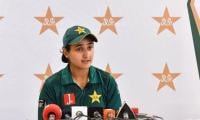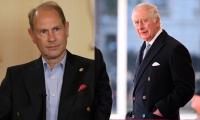Every Pakistani who has access to any form of media is now aware or at least familiar with the government’s narrative of Pakistan’s debt and the need for drastic measures. This is accompanied by the refrain that all past politicians were corrupt and that corruption is Pakistan’s biggest problem. That was also the centerpiece of the political messaging in the 2018 elections. But are debt and corruption really Pakistan’s most significant problems or is this simply the narrative that the state wants to promote?
Let’s address Pakistan’s debt. The figures are slightly unclear as statistics produced in Pakistan are usually fudged. Things are never reported in their starkest form for a number of reasons ranging from vested interests to public outrage or societal panic. Pakistan’s debt figures as reported by the State Bank of Pakistan (SBP) currently stand at $130 billion. This equates to approximately 84 percent of GDP. Compare the situation in Pakistan with other countries. The largest economy in the world is the US, it also has the largest debt at $69 trillion and it’s debt-to-GDP ratio is already 104 percent and likely to increase later this year. China, an emerging superpower is believed to be at $40 trillion which is almost 304 percent of its GDP. India’s total debt has risen to $1.9 trillion which equals 70 percent of its GDP.
Corruption is the other current 'hot word'. One of the most respected organizations that measures levels of corruption, 'Transparency International', puts India as marginally less corrupt than Pakistan, while China scores marginally better than India. The US and UK also make the list with some corruption and no country scores a perfect 100. What becomes evident from just these few examples (many more exist)is that increased corruption has not prevented the development or growth of either the Chinese or Indian economies, nor has high debt or even the troubling debt-to-GDP ratio hampered the US, China or even the UK.
So why is Pakistan different? It does not have debts beyond its GDP and its corruption has periodically been checked and reduced. Is it the narrow tax base? Yes, it may be, let’s look at the numbers.
It is often said that only one percent of Pakistan pays taxes. The FBR repeatedly affirms this. Every government, military or civilian, has tried to expand the tax base. The current government is not reinventing the wheel nor being any more diligent. Ayub Khan tried to broaden the tax base in 1958, as did Yahya in 1969, Zia 1986 and finally Musharraf in 1999. The governments of Zardari in 2008 and Sharif in 2016 attempted to do the same.
Once again comparisons show that only 4.5 percent Indians pay tax and a paltry 2 percenty pay income tax in China. The Pakistani government is reacting to regain their pre-election popularity, the same trap that every leader in Pakistan falls into. Increase the tax net? How? 31 percent of the population, approximately 65 million people, is under the age of 14 years. Twenty-one percent of the population or 43 million people are between the ages of 15 and 24 years. And 4.45 percent are over the age of 60, adding another 10 million people to those who are not eligible to even pay tax. There are 118 million people effectively out of the tax net.
Fifty-one percent of the population is women. Of these, only 20-25 percent are in any form of employment. This accounts for 70 million women and girls who are unable to contribute to the national exchequer. Less than 7 percent of the women employed are in jobs that put them in the tax bracket.
The average median age in Pakistan is 23.8 years. A UNDP report and the Pakistan Bureau of Statistics state that 58-60 percent of the population of Pakistan is under 30. Those aged 25-54 make up almost 38 percent of the population while another 5.57 percent fall in the 55-64 year bracket. Simple math shows that at best 44 percent of the population is of earning age. Factor in the women ratio, the unemployed ratio of 6 percent this figure drops down to the low 20s at best. If the global poverty line of $2 is taken as a benchmark then 24 percent of Pakistanis were below the poverty line in 2017. With the current stagnation of the economy, an estimated one million Pakistanis will further fall below the poverty line.
Pakistan collected Rs5228 billion as revenue; it will add a maximum of another Rs70-100 billion to this pot, totaling say Rs600 billion. This should and will come from the estimated 44 million self-employed shopkeepers and service providers, most of them currently not paying income tax. The current population of 32 million households contribute roughly Rs140,000 per annum. The average monthly household income in the census of 2016 was an average of Rs30,110 while the monthly household expenditure was estimated at Rs27,414 rupees.
Only 1.32 million people have credit cards in Pakistan; this does not signify wealth but also the debt so-called rich people are living with each month. Government expenditure, meanwhile, has risen to a mind-boggling Rs7.2 trillion. Each year, Rs1.7 trillion goes to circular debt, Rs1.2 trillion goes to public-sector enterprises, there are losses of almost Rs48 billion per annum to natural gas losses and it goes on.
The current leadership needs to understand the core issues, otherwise it will continue to chase its tail. Reducing corruption, lessening the import bill and expanding the tax net will help but these are short-term, near-sighted actions. The problem remains the stagnating economy, huge expenditure, lack of confidence by international investors, a bureaucracy that does not encourage foreign investment and the perception that everything is a security risk.
All these factors, compounded with our confused state and religious, traditional and modern society have brought us to the current crossroads. Unless the current government is willing to tackle the difficult 'big ticket items', it will sink into the annals of Pakistan history as dismally as its predecessors. This party promised change, but can it deliver?
The writer is the executive director of I Am Karachi.
A representational image showing residents walking at a wholesale market in Karachi. — AFP/FileOnce again there is...
A representational image showing late Pakistani human rights activist and Supreme Court lawyer Asma Jahangir. —...
A representational image showing a security personnel sanding guard beside a ship carrying containers at Gwadar port....
A health worker administers polio vaccine drops to a child during a door-to-door polio vaccination campaign in Lahore,...
Armed militants of the banned Tehreek-e-Taliban Pakistan pose for a photograph in Orakzai Agency. —...
An aeroplane of the national flag carrier of Pakistan is seen in this file photo. — AFPWhile Pakistan considers...







